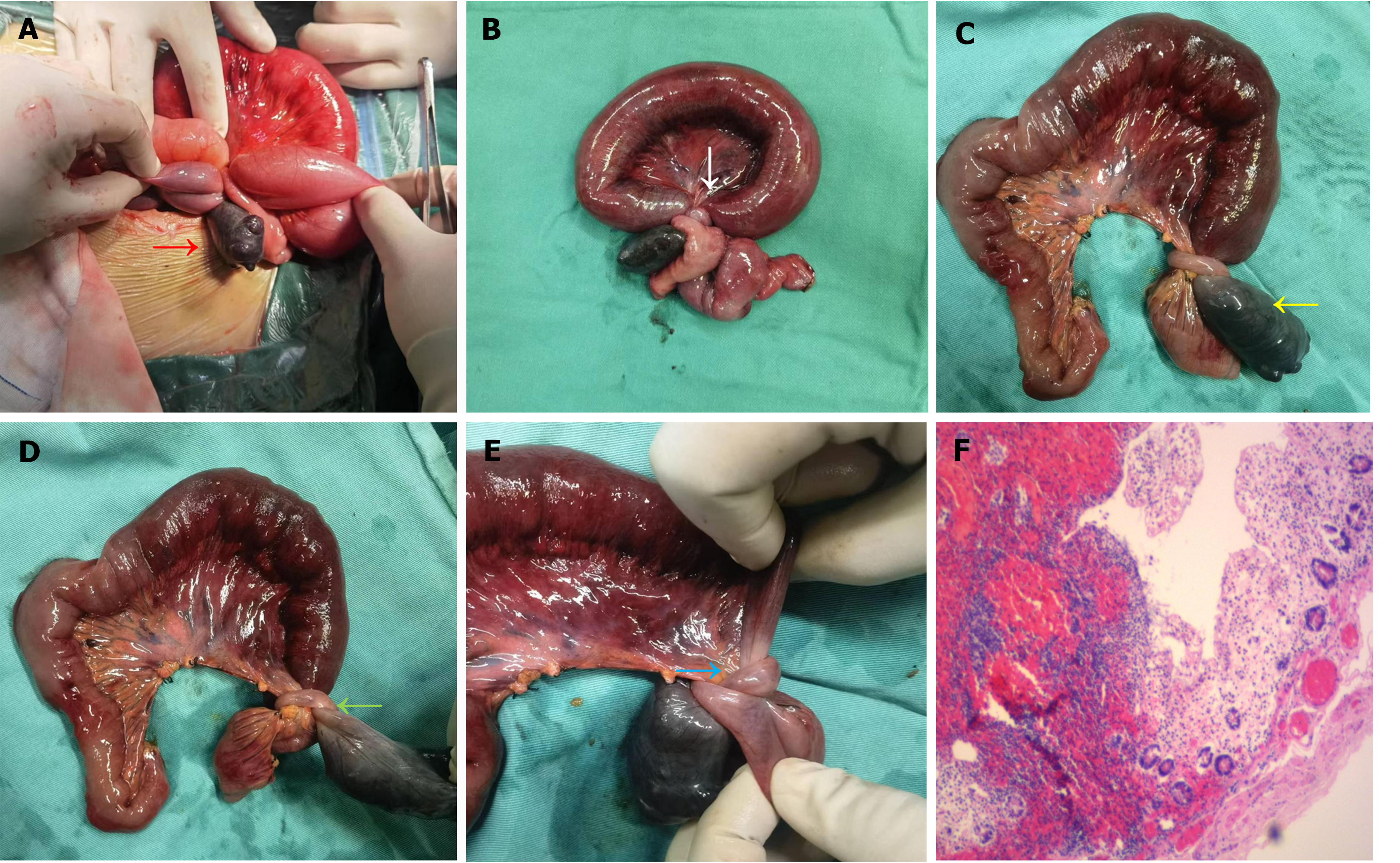Copyright
©The Author(s) 2024.
World J Clin Cases. Jul 16, 2024; 12(20): 4391-4396
Published online Jul 16, 2024. doi: 10.12998/wjcc.v12.i20.4391
Published online Jul 16, 2024. doi: 10.12998/wjcc.v12.i20.4391
Figure 1 Initial computed tomography examination.
A: Absence of peritoneal fluid accumulation surrounding the liver (orange arrow); B: Identification of an appendiceal fecalith with slight peri-appendiceal effusion (yellow arrow); C: Dilation and fluid retention in a segment of the small intestine (green arrow).
Figure 2 Second computed tomography examination.
A: Confirmation of the absence of fluid around the liver (orange arrow); B: Marked dilation and increased wall thickness of the small intestine, increased from the initial presentation on admission (green arrow); C: Localized high-density area in the right lower quadrant suggesting potential hemorrhagic necrosis (yellow arrow).
Figure 3 Surgical photographs and photomicrograph.
A: Visualization of localized necrosis in the intestinal loop after abdominal entry (orange arrow); B: Intraperitoneal hernia noted after excision, along with evidence of intestinal obstruction (white arrow); C: Necrosis evident in conjunction with a Meckel's diverticulum (yellow arrow); D: Diverticulum presenting with prominent entrapment modifications (green arrow); E: Diverticulum ensnared in a configuration resembling a surgical knot (blue arrow); F: Postoperative histological examination revealed intestinal necrosis accompanied by inflammatory cell aggregation (hematoxylin-eosin staining, magnification 40 ×).
- Citation: Zhang Q, Xu XJ, Ma J, Zhang YM. Misdiagnosed Meckel's diverticulum with internal hernia mimicking appendicitis: A case report. World J Clin Cases 2024; 12(20): 4391-4396
- URL: https://www.wjgnet.com/2307-8960/full/v12/i20/4391.htm
- DOI: https://dx.doi.org/10.12998/wjcc.v12.i20.4391











